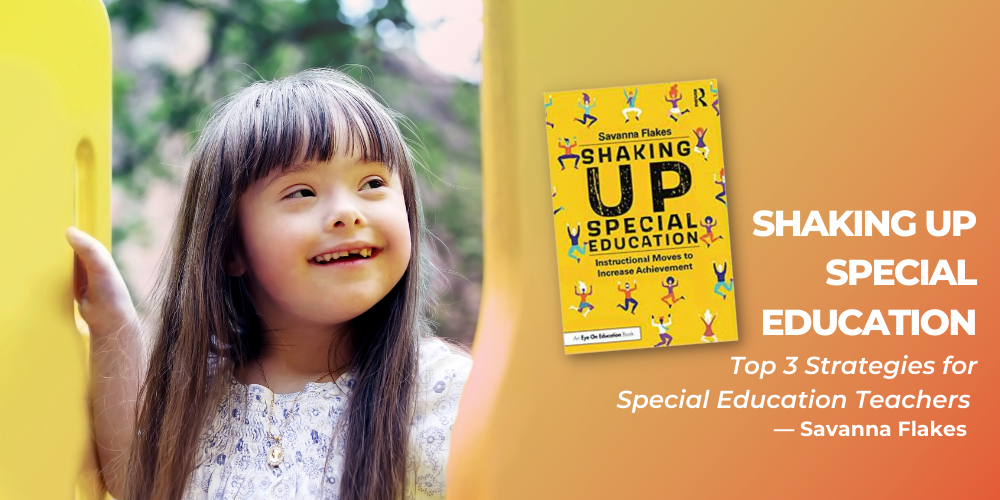There is never a shortage of research-based strategies to teach diverse learners. There is, however, a shortage of time and the need to be strategic with instructional practices that provide a powerful boost for learners with exceptionalities. As special education teachers, we are always looking for high-leverage instructional practices that can be used for multiple grade levels and across all content areas. Here are 3 practices to help us shake up our instruction for our students.
Specially Designed Instruction
Specially Designed Instruction is the secret sauce that helps a learner with a disability access the curriculum. Often, we use brain-research combined with out-of-the-box thinking to add additional scaffolds, resources, and strategies to ensure students with disabilities can make significant academic progress. Specially Designed Instruction isn’t a one-size-fits-all approach; it is based on knowing our learners’ strengths and interests, needs for growth, and areas of academic impact. For example, some of our students struggle to access grade-level text, but instead of simplifying the text, a teacher could add to the text by amplifying it. As you analyze an upcoming text, amplify the text by doing some of the following:
- Anticipate possible images to make vocabulary and concepts visual. A great website with free visuals is the nounproject.com.
- Chunk the text into smaller, more manageable passages.
- Model effective reading strategies by adding guiding questions or headings to set a focus for each paragraph or section.
- Add visuals with captions that support conceptual understanding.
- Add a glossary or translations of key terms within the text using parentheses and color-coding.
- Leave a wider margin and enlarge the text for student notes.
- Enhance materials by digitizing text to change size, color, spacing.
Chapter three in my book, Shaking Up Special Education: Instructional Moves to Increase Student Achievement provides dozens of examples of Specially Designed Instruction in action!
Social-Emotional Learning
Beyond providing students the opportunity to check-in and self-regulate, we are invested in embedding social-emotionallearning throughout the content. For example, in math, an enduring standard is, “Make sense of problems and persevere in solving them.” This is the perfect opportunity to discuss and model growth mindset, perseverance, and self-awareness in planning, carrying out the plan, and checking its success. There are concrete actions we can explicitly teach students to use “before,” “during,” and “after” solving a problem. Specifically, “DURING” solving the problem, we can reinforce:
- Perseverance (sticking to it)
- Monitoring of the strategy and/or plan
- Metacognition (Asking self, “Does this make sense?”)
When SEL is explicitly taught and aligned with instructional standards, students will internalize and transfer these necessary SEL skills across the entire curriculum. When planning, consider analyzing standards and embedding intentional class time to explicitly model an SEL skill.
Small Group Differentiation
We can individualize and accelerate student learning at a higher capacity in smaller groups. Sometimes, the thought of co-planning for small groups can be overwhelming, so I suggest creating routines that allow for technology to be a third partner in the co-taught classroom. That’s right! Whether you are a 1:1 device school or can sign outa few computers from the media center, technology can be a fellow co-teacher.
For example, technology tools like Flipgrid, Edpuzzle, and Classkick can differentiate students’ learning pathways with added supports like reading aloud, allowing for students to work at their own pace, and collaborating meaningfully with fellow classmates. This, in turn, allows for co-teachers to work with different groups of students. This Station Co-teaching Downloadable provides a great example of co-teachers differentiating instruction for three small groups and a template for your use.
One step in the right direction can make a huge impact for a student. Whether you’re setting a goal to add more Specially Designed Instruction, or you plan on embedding Social Emotional Learning with your next reading activity, or perhaps you are committing to check out a technology tool that can help with small group instruction, each of these 3 moves can add meaningful access. Be intentional about your instructional moves and celebrate your success along the journey. Let’s get shaking!
Register for course 5140: New Moves for Teaching Students with Disabilities. This course uses Savanna Flake’s book and includes many helpful resources to shake your instruction up and boost learning for students with disabilities.







